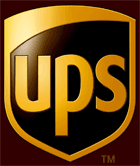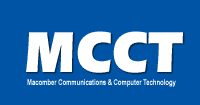| Nationwide Mall Information
 MCCT has written a Plan that makes available a database and interface
to allow callers to check on any of hundreds of malls in the U.S.
and any of the stores within that mall. The customer who manages
all of this has been provided an easy to use interface to update
the MySQL tables containing message prompts, promotions, address
and telephone number information, etc. MCCT has written a Plan that makes available a database and interface
to allow callers to check on any of hundreds of malls in the U.S.
and any of the stores within that mall. The customer who manages
all of this has been provided an easy to use interface to update
the MySQL tables containing message prompts, promotions, address
and telephone number information, etc.
Callers can call a main number
and select one or more of hundreds of malls. Once in the mall main
menu, they can search for stores by category or name and find all
the information they would need such as:
- Mall and store open & closing times for each day of the
week,
- Store search by name, type or category,
- Special events,
- Jobs that are available,
- Directions to malls and parking information,
- Residential information about general area,
- Call transfers to operators and stores/restaurants,
- Mall security,
- Management office,
- Maintenance,
- Public transportation,
- Sponsor information or
- Take a survey.
This is a working application and is dynamic in that the database
is regularly updated. Callers planning trips can “plan ahead” if
shopping is on their activity list; many people like to buy local
products and can “pre-shop’ using this application.
In many metropolitan areas, there are several malls that can be
easily researched while sitting in the comfort of your home.
 Without having the extensive tracking systems used by UPS, FedEx
and DHL, our customers have the ability of tracking shipments completely.
This is all done with a quick telephone call from the driver. The
basis for the generic application relies on a “pallet” count;
however, the application may be customized to use any other measurement
scheme. Without having the extensive tracking systems used by UPS, FedEx
and DHL, our customers have the ability of tracking shipments completely.
This is all done with a quick telephone call from the driver. The
basis for the generic application relies on a “pallet” count;
however, the application may be customized to use any other measurement
scheme.
At each store, e.g., Wal-Mart, Kmart, Target, etc., a unique store
number is given to be entered into the system. There are pickups
and/or deliveries at each store and the driver simply enters the
truck number, store number, the number of pallets dropped off and
the number of pallets picked up. Combined with the time the data
is entered, a complete picture of each truck’s route and
performance is provided to the home office.
The driver may also be prompted to check in to the home office
or may retrieve a voice mail message sent after his most recent
stop. This adds interaction with the driver for special instructions,
changes in the route or other important messages that are pertinent
to the driver.
This is a simple and straightforward application that accomplishes
a multitude of functionality at a very low cost.
 There are a variety of companies who have people in the field
who go to remote sites that are unmanned. Examples include mobile
phone carriers such as Cingular, Verizon Wireless, AT&T, etc.;
the field personnel must go to the repeater sites and check equipment
on a regular basis. There are other types of remote site checking
situations, but this will serve as our example. There are a variety of companies who have people in the field
who go to remote sites that are unmanned. Examples include mobile
phone carriers such as Cingular, Verizon Wireless, AT&T, etc.;
the field personnel must go to the repeater sites and check equipment
on a regular basis. There are other types of remote site checking
situations, but this will serve as our example.
Historically, there have been tragedies that have occurred at
some of these remote sites; these include agents being attacked
and badly injured with some killed and also heart attacks incurred
with no one knowing. As a result, some of these companies have
required applications to be developed that would create active
contact between the agent and the IVR with check in times starting
a clock. If no input were received after a predetermined time then
a series of events would be triggered by the IVR. These are described
in this section. In addition to entering an agent ID, the agent
would also enter site, switch, alarm, city and state information.
When the agent initially logs into the site with the agent ID,
s/he is asked a series of questions by the IVR. The site, switch
city and state information can be programmed for an automatic response
in the agent’s cell phone and the agent will then be asked
if an alarm will be generated so that an operations center can
be alerted.
Should the agent not properly log out before the pre-determined
time, a series of calls will be triggered to be dialed out from
the IVR that could include the regional operations center followed
by legal assistance from the local authorities to conduct a search
of the remote site expediently. Since some of the companies in
this arena have thousands of agents, this type of application is
essential based on the types of things that can occur to an individual
who is in the field alone.
Additionally, there are several reports generated by the application
about the daily activities of the agents. These will show trends,
average times, sites in need of a visit, dial-out records and a
variety of other pertinent data customizable by the system administrator.
There are many
possibilities for applications that provide alerts to a variety
of customers – businesses, government, individuals,
medical, educational and so on. The possibilities embrace features
that have already been created in different “flavors” for
customers; these features include:
- Fax
- E-mail
- Voice Mail
- GIS (Geographic Information Systems)
- Conferencing
Using any or all of the features shown above, users with accounts
may sign up for the many possible services that are available.
The GIS feature includes zip code, telephone number, address and
geographical coordinate information that is needed by law enforcement
and other government customers. Conferencing can be set up by individual
selection based on invitations or searches or may be automated
in the event of emergencies such as amber alerts or major weather
events, as examples. Some of the many available services include:
- Amber alerts
- Baseball scores
- Cancellations/Closures
- Flight information
- News
- System alarm alerts
- Traffic reports
- Weather conditions
These are just a few of the services that can be provided via
e-mail, fax or voice messaging. The alerts can be triggered by
events or by scheduled time slots. |

